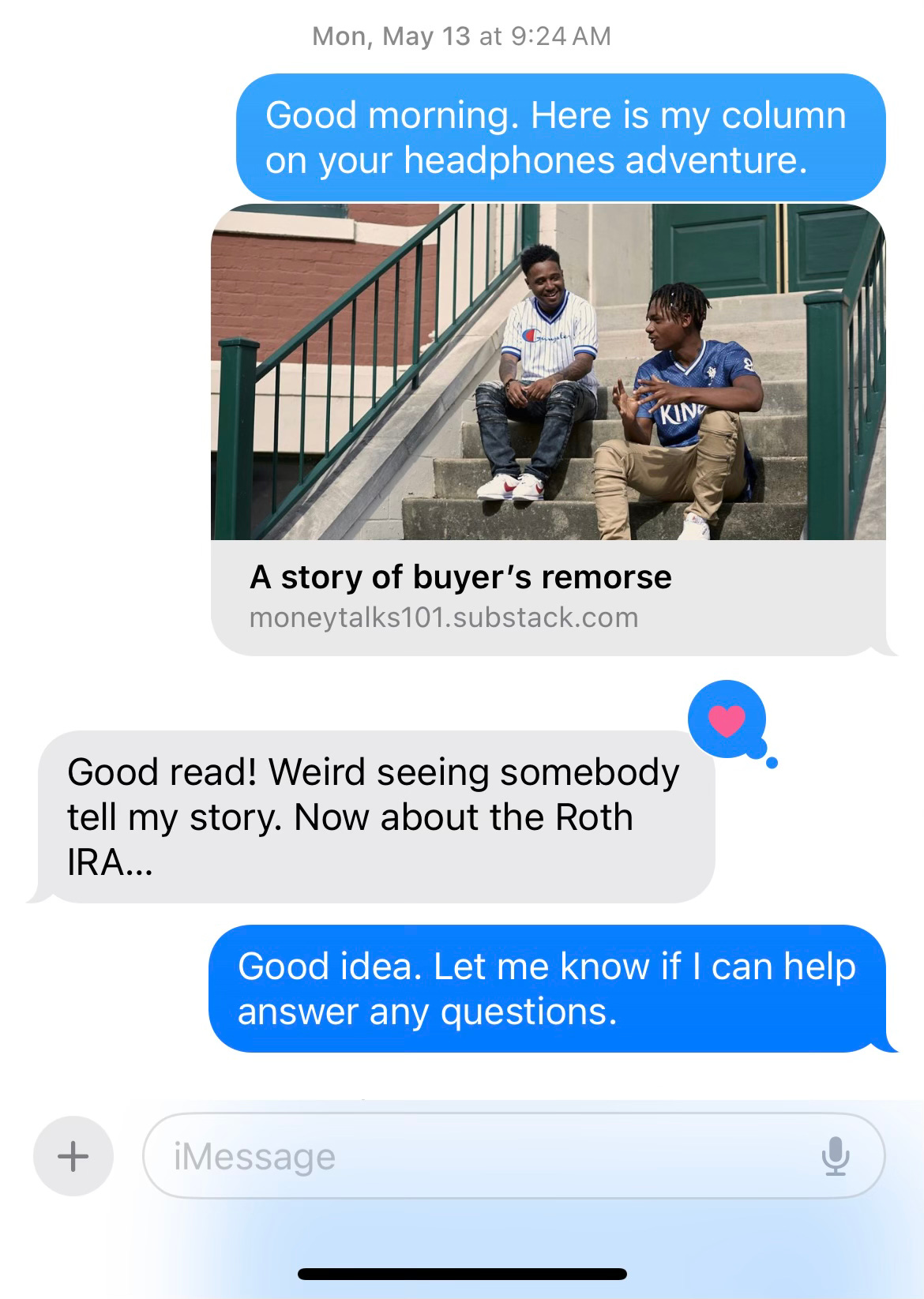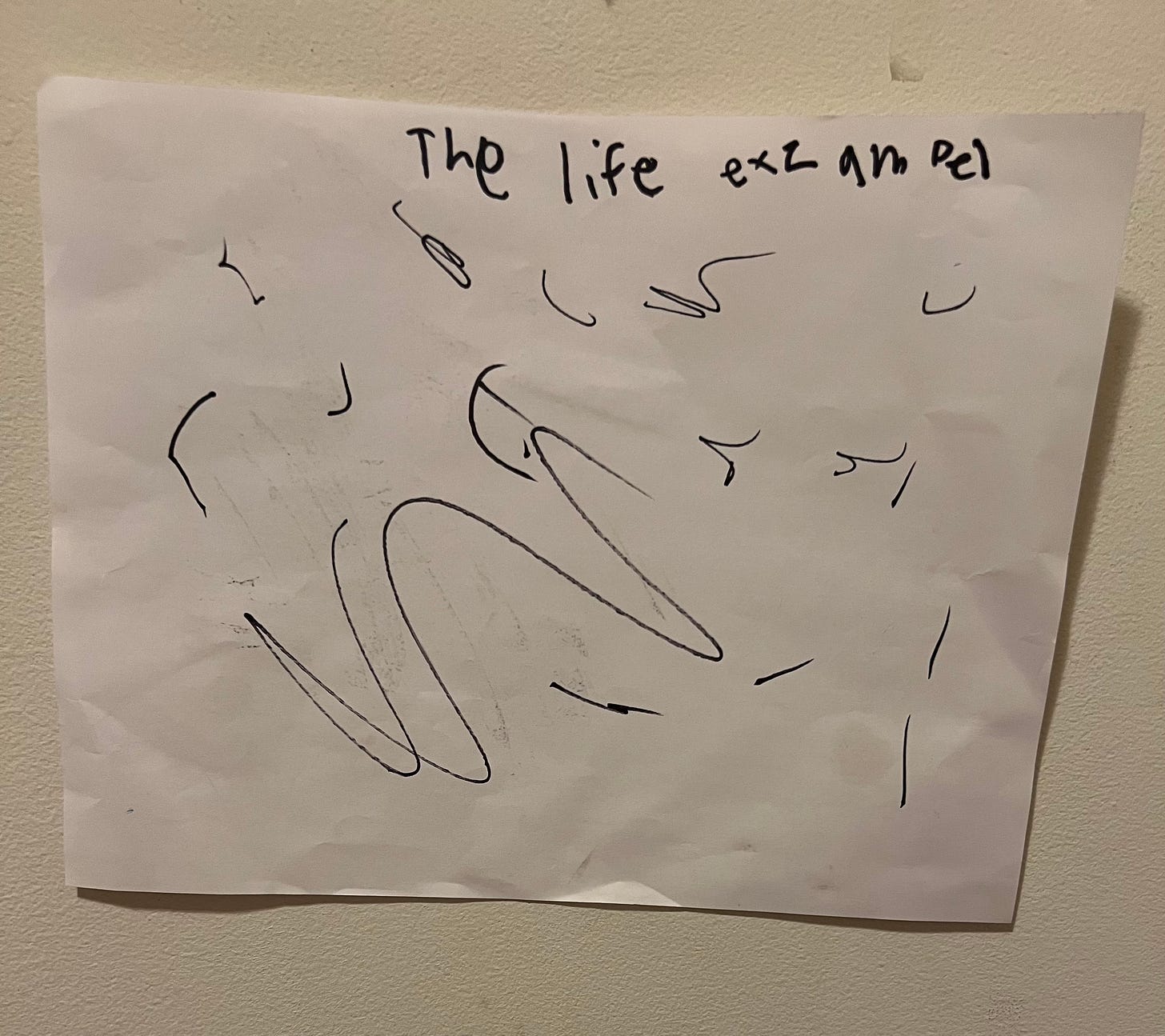
Remember my young fella Joel?
I told you about him and his questionable spending last month. He texted me three hours after I published on May 13. His words hit home.
“Good read!” Joel wrote. “Weird seeing somebody tell my story.”
For the past few months, I’ve implored my daughter Parker to not leave her story in the hands of someone else. I’ve done my best to get that across through a simple, six-word question.
“Who’s the author of your story?”
Unless you’ve read your name in print or heard it mentioned on any type of broadcast, it’s impossible to know the feeling of someone telling your story.
It’s not just intimidating. It can be anxiety-inducing.
You have one image of your life. But anyone telling your story will have their interpretation. You can only hope that after sharing intimate details about yourself that your version will align with the storyteller’s.
My first time navigating such feelings was last year. My friend and mentor, Justice B. Hill, wrote a column about me and my mission with Money Talks. I’m fortunate that Justice’s words told my story accurately.
In late April, Michael Kinney, founder of Michael Kinney Media, wrote the second article on our journey. I’m grateful that he also handled our story with extreme care and was accurate.
But no matter who else deems our story worth sharing, I’m the author.
I’ve made sure of it.
I don’t just tell our story twice a week at Money Talks. I’m intentional about crafting my story every day.
All of the small things I’ve detailed here at Money Talks are like quick-hitting chapters: The way I faithfully tithe. The way I wake up with discipline. The way I exercise. The way I read. The way I eat at home instead of eating out. How I’ve put away games. And shut off sports. And the radio. And, in general, the television. I’ve even changed the way I dress.
Whenever I ask Parker who’s the author of her story, she dutifully says, “I am.” But she confirmed to me Sunday night that she understands what I’m getting at. Her interpretation matches mine.
“I literally think of myself sitting at a desk and writing a book,” Parker told me.
Hearing her answer made my heart dance.
Another approach I’ve used with Parker is a shoddy drawing on a single sheet of white printing paper. It’s pinned to her bedroom wall. It’s designed to depict the consequences that come with life’s choices.
Using the illustration, I explained that there are good choices and bad choices. To represent every bad choice, I drew a smudge with a black Sharpie. I drew small lines for minor mistakes and long, thick lines across the middle for major mistakes.
Parker surprised me when she later decided on her own to write the heading on the single sheet of paper: “The Life Example.”
At 10, Parker is still learning to improve her focus, maintain better discipline and balance her time between playtime and putting forth effort for her future.
Today, her biggest battle is screen time. She’s young and carefree. Parker has no concept of the distractions coming when she crosses into teenage years and adulthood.
My occasional question — and her straightforward answer — is my way of helping Parker remember who she is when she needs to the most. That nothing and no one can craft her story. That she and only she is the author.
Each day offers a new page, and each lesson learned is another chapter.
It’s best to take control.
Because someday we’ll all be forced to face the story we wrote.









